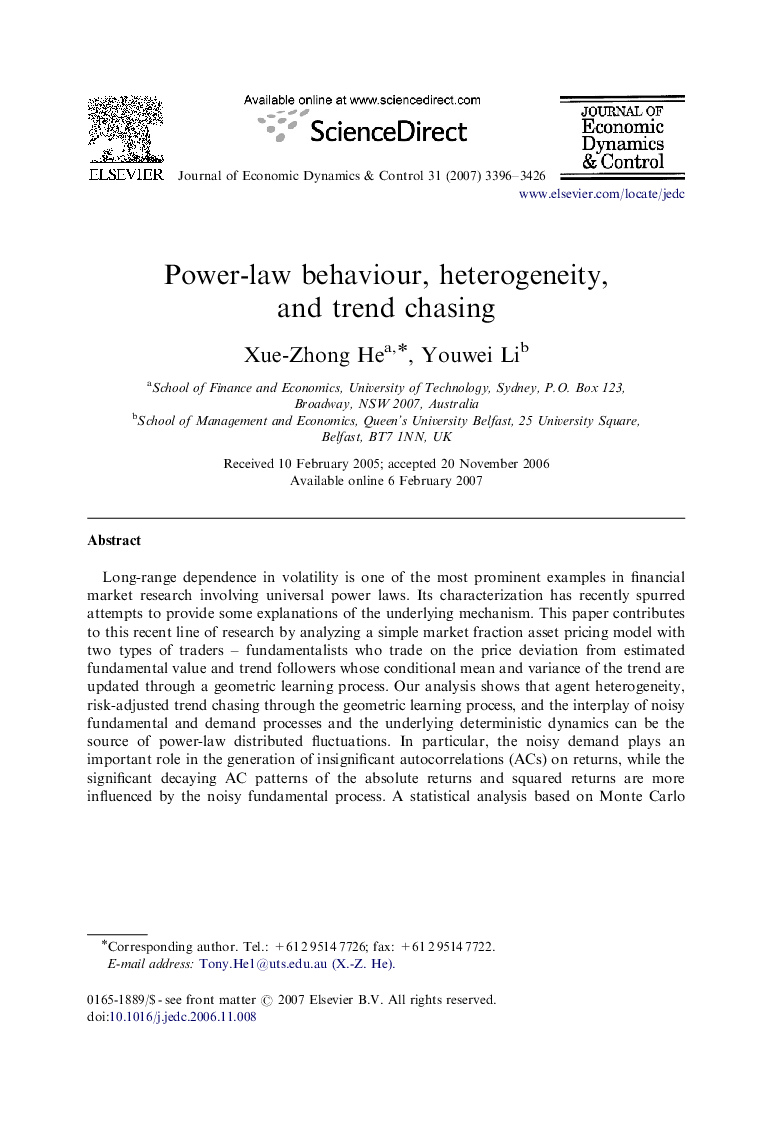| Article ID | Journal | Published Year | Pages | File Type |
|---|---|---|---|---|
| 5099855 | Journal of Economic Dynamics and Control | 2007 | 31 Pages |
Abstract
Long-range dependence in volatility is one of the most prominent examples in financial market research involving universal power laws. Its characterization has recently spurred attempts to provide some explanations of the underlying mechanism. This paper contributes to this recent line of research by analyzing a simple market fraction asset pricing model with two types of traders - fundamentalists who trade on the price deviation from estimated fundamental value and trend followers whose conditional mean and variance of the trend are updated through a geometric learning process. Our analysis shows that agent heterogeneity, risk-adjusted trend chasing through the geometric learning process, and the interplay of noisy fundamental and demand processes and the underlying deterministic dynamics can be the source of power-law distributed fluctuations. In particular, the noisy demand plays an important role in the generation of insignificant autocorrelations (ACs) on returns, while the significant decaying AC patterns of the absolute returns and squared returns are more influenced by the noisy fundamental process. A statistical analysis based on Monte Carlo simulations is conducted to characterize the decay rate. Realistic estimates of the power-law decay indices and the (FI)GARCH parameters are presented.
Related Topics
Physical Sciences and Engineering
Mathematics
Control and Optimization
Authors
Xue-Zhong He, Youwei Li,
